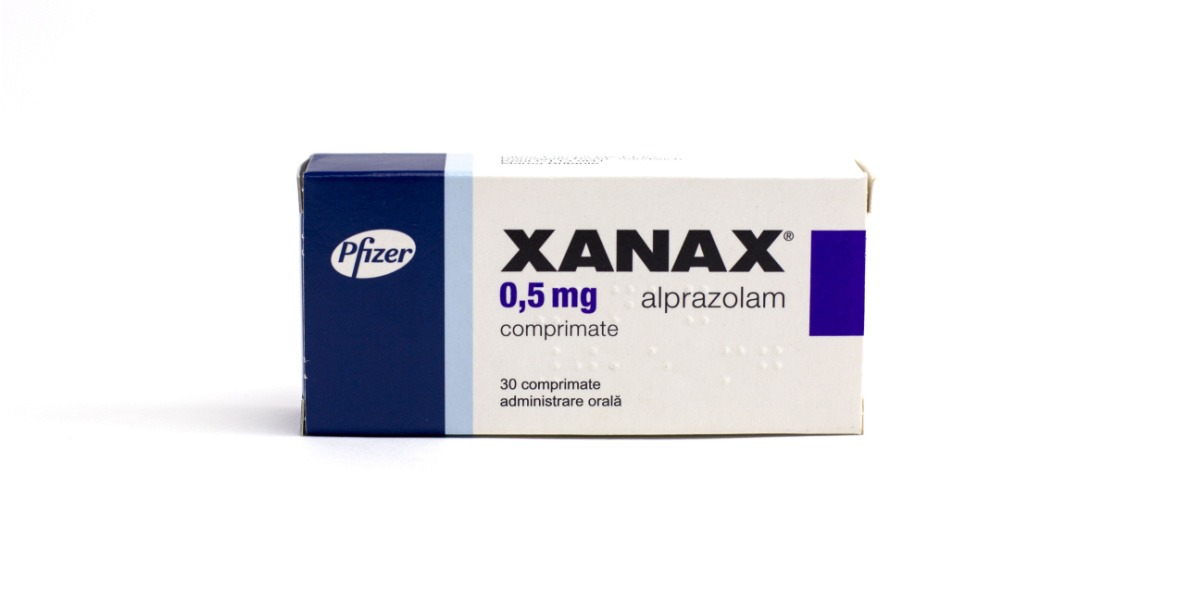Xanax is a brand-name medication containing alprazolam, a benzodiazepine. It is used to treat anxiety disorders, including generalized anxiety disorder and panic disorder. [1] Due to their potential for abuse, addiction, and dependence, Xanax is awarded a Schedule IV classification and can cause withdrawal symptoms upon discontinuation. [1][2]
Xanax withdrawal symptoms can include insomnia, blurred vision, headache, weakness, fatigue, sweating, cravings, seizures, hallucinations, and aggression.
- Xanax can lead to serious withdrawal symptoms if abused or stopped abruptly. Long-term Xanax use or misuse in large doses can increase the risk, severity, and duration of withdrawal symptoms.
- Xanax leaves the body quickly (between 6-25 hours), which can cause withdrawal symptoms to emerge within a few hours of the previous dose. Withdrawal symptoms typically last between two and six weeks before they're alleviated. In some cases, withdrawal symptoms can continue for many months.
- To reduce severity or avoid withdrawal symptoms, it is recommended to taper Xanax use in small and gradual increments. Typically, it is recommended to reduce the daily dose by no more than 0.5mg each week.

Does Xanax cause withdrawal symptoms?
Xanax (alprazolam) often causes withdrawal symptoms when discontinued, which can range from mild to severe. The risk of withdrawal symptoms is increased if Xanax is stopped abruptly, so a gradual dose reduction is recommended. [1]
Xanax has a very short half-life, which means that it leaves the body quickly. This can cause withdrawal symptoms to emerge within a few hours of the previous dose. Because of this, withdrawal symptoms can occur in between doses, even if Xanax use is not reduced or stopped. This can also contribute to the risk of abuse or misuse of the medication. [1][3]
Heavy and prolonged use or abuse of Xanax increases the risk of withdrawal symptoms upon discontinuation. However, dependence and withdrawal symptoms can also occur when it is taken exactly as prescribed. Prolonged daily use of 4 mg or more is shown to significantly increase the risk of severe withdrawal symptoms, particularly seizures. [1]
Is Xanax addictive?
Benzodiazepines, such as Xanax, have the potential to cause physical and psychological dependence within several days or weeks of consistent use. This causes the individual to become reliant on the medication, experiencing withdrawal symptoms if it is not used, and can contribute to the risk of abuse and addiction. [3]
Xanax has been awarded a Schedule IV classification in the Controlled Substances Act, which implies a lower risk of dependence compared to substances under Schedules I-III. The drug, however, is considered to have a relatively high record of abuse and addiction.
Xanax withdrawal symptoms
Stopping or reducing Xanax can often result in withdrawal symptoms, ranging from mild to severe.
Common Xanax withdrawal symptoms
Common Xanax withdrawal symptoms include: [1][3][4][5]
- Increased sensitivity to sensory perceptions
- Concentration and memory impairments
- Muscle twitching
- Tingling in the hands and feet
- Stomach and muscle cramps
- Diarrhea
- Nausea
- Vomiting
- Reduced appetite
- Weight loss
- Anxiety
- Agitation
- Restlessness
- Depression
- Confusion
- Insomnia
- Blurred vision
- Headache
- Weakness
- Fatigue
- Sweating
- Cravings
Severe Xanax withdrawal symptoms
In some cases, particularly following the extended use of large doses, Xanax withdrawal symptoms can be severe or persistent. Severe withdrawal symptoms can include: [1][3][4][5]
- Seizures
- Hallucinations
- Aggression
- Suicidal thoughts
Xanax withdrawal timeline
Xanax has a short half-life of between 6-25 hours, which can cause the onset of withdrawal symptoms within a day of the final dose. The risk of severe withdrawal symptoms, such as seizures, is believed to be greatest within the first 1-3 days. [1][3]
Typically, withdrawal symptoms will remain for between two and six weeks, following which time they will be alleviated. However, in some cases, withdrawal symptoms can continue for many months, which can include persistent mood changes and sleep disturbances. [2][4]
Long-term Xanax use or misuse in large doses can increase the risk, severity, and duration of withdrawal symptoms. Other factors that can impact the duration and severity of withdrawal symptoms include other substance use and physical and mental health conditions. [2][3]
Xanax cessation timeline
When stopping Xanax use, it is recommended to taper the dose in small and gradual increments, as this can help reduce the severity of withdrawal symptoms. A safe and effective cessation timeline will vary from person to person and will often depend on the duration and amount of Xanax use. Someone using Xanax in large doses for a prolonged period will likely require a much slower cessation. [6]
- Typically, it is recommended to reduce the daily dose by no more than 0.5mg each week, although this can be altered as required. The cessation process can be slowed or paused if withdrawal symptoms emerge. For example, dose reductions can be made in 0.25mg intervals and slowed to changes once every four weeks. [1][6]
During the cessation process, individuals will usually be monitored and treated for withdrawal symptoms by the prescribing doctor, who can adjust the tapering schedule as necessary.
Is Xanax safe to withdraw from at home?
Individuals who have used small doses of Xanax for a short period of under two weeks may be able to withdraw at home without adverse effects. However, continued use for several weeks can result in potentially severe withdrawal symptoms so it may not be safe to withdraw at home.[1]
It is advised to seek professional advice before reducing or stopping Xanax use to reduce side effects, which can be received through inpatient or outpatient services. If individuals wish to remain at home while withdrawing from Xanax, it is important to do so with professional support to ensure safety. [4][7]
Similarly, individuals wishing to abruptly stop or rapidly reduce Xanax use should not attempt to do this at home without professional intervention, as the risk of severe withdrawal symptoms will be much higher.[3]
Xanax detox treatment
Benzodiazepine detox treatment can be provided through outpatient services, during which the individual can attend appointments with a clinician to receive medication and therapeutic intervention. [4]
In the case of prolonged and heavy Xanax use or abuse, it can be necessary to utilize inpatient treatment, such as a rehab center, to ensure a safe detox. Inpatient care can allow professionals to monitor and treat withdrawal symptoms as they emerge and prevent any adverse effects. Additional interventions can also be implemented, such as group and individual therapy, holistic approaches, and medication.[4][7]
In some cases, it is advised to replace Xanax with a longer-acting benzodiazepine, such as diazepam, as this can help provide a safer cessation process. Diazepam has a long half-life, which can reduce the risk of severe withdrawal symptoms. It is also available in a range of tablet strengths, which can provide a more gradual taper. [6]
Other medications, such as antidepressants, melatonin, and anticonvulsants like gabapentin, can be prescribed during Xanax detox, to help reduce withdrawal symptoms such as insomnia, anxiety, and low mood. [3][6]
Psychological and psychosocial therapies can be implemented during detox and continued throughout the recovery process, along with holistic and physical health care. [3][7]



-guide-detail.jpg?v=1722503177)
-guide-detail.jpg?v=1722502237)